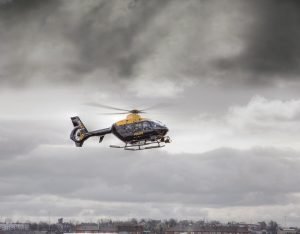KENS-TV and AZ Central are reporting that lawsuits concerning helicopter crashes filed on behalf of victims’ families showed the lack of thorough investigation by the NTSB and problems with small aircraft manufacturers and parts manufacturers are what caused crashes, injuries, and deaths when the NTSB reported the causes were “pilot error.”

According to the KENS report, Pilot Craig Nemec took three passengers up with him in his Robinson R-44. The helicopter crashed killing Nemec and two of the three passengers on board. When the NTSB investigated the crash, their report indicated that the cause was pilot error. However, after a lawsuit was filed against the manufacturer it was revealed that “the helicopter was destroyed because of a devastating fire caused by fuel leaking from the helicopter’s tanks.”
According to one of the attorneys representing Nemec’s family, Michael Slack, the NTSB’s “determination of probable cause looked at why the helicopter hit the ground. The NTSB didn’t bother to examine why everybody got horribly injured.”
The suit settled in 2009 out of court for “an undisclosed amount of money.” Part of the settlement led to the company making improved fuel tank systems for it’s older and new helicopters.
New Orleans helicopter accident attorneys note that another case in Arizona highlighted the lack of thorough investigations and reports by the NTSB for these general aviation incidents. According to AZ Central, in 2010, Thomas Stewart piloted his private helicopter with his family on board. The yellow rotor blade had been replaced only a few months before. The trip went well until the helicopter “reached an area in the desert near Cave Creek and began to leave a trail of pieces for about a quarter-mile before it dropped from the sky and burst into a ball of flames in a desert wash.”
Investigations by the attorneys representing Stewart’s family revealed that the blade came in contact with the tail of the helicopter. The NTSB investigation, which was released three years after the accident, also showed that the blade hit the tail, however federal investigators “blamed the wreck on Stewart’s daughter kicking the control panel as she sat on her father’s lap causing the helicopter to go into a jerking motion before the blade and tail collided.”
Lawyers representing the family say that the new rotor blade that was installed by the helicopter manufacturer was deemed unworthy for flight by the part’s maker. Aviation attorney, Frank Fleming, wants to show that there were “cracks in the blade that caused the failure and resulted in the deaths” of all people aboard the air craft.
Fleming went on to say that the scenario the NTSB cites in their report about the daughter kicking the control panel was “made up entirely out of a simulator by Eurocopter (the helicopter manufacturer)” and that the “NTSB agreed to it, and it is not an example of a good NTSB investigation.” Further evidence of the NTSB’s deference to the industry is their permission for representatives from the manufacturer of the aircraft “to be present at the deconstruction of the aircraft” while victims and their families are not permitted to do the same.
Another issue with NTSB investigations is the length of time it takes for them to produce an investigative report. In the case of the Stewart crash it took them three years to release their report, but victims or families of the victims are required to file suit within two years of the crash.
According to AZ Central’s report, there were at least 34 lawsuits filed since 2000 in Maricopa County Superior Court that involved aircraft manufacturers or parts manufacturers. All of those suits “were settled out of court for undisclosed amounts.”
